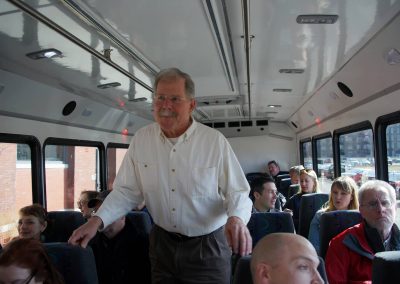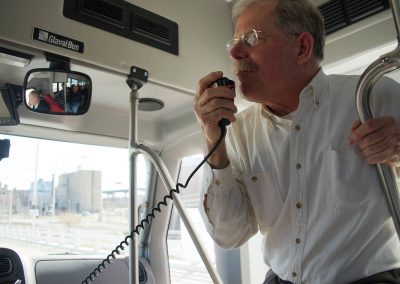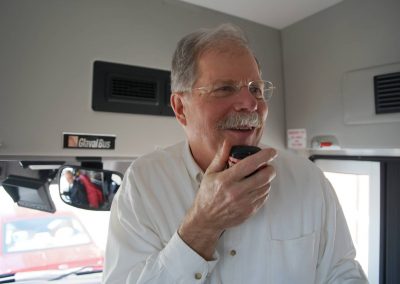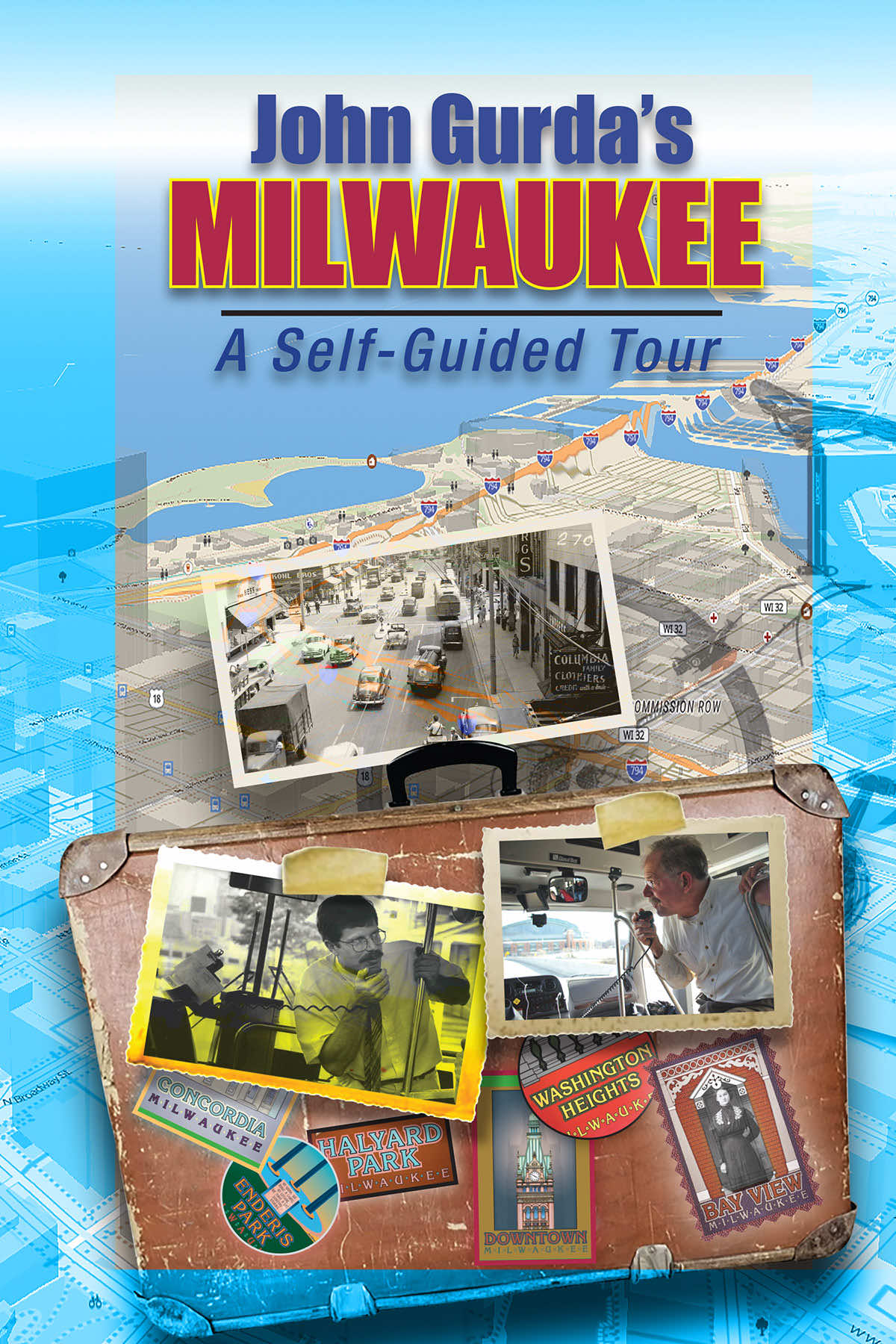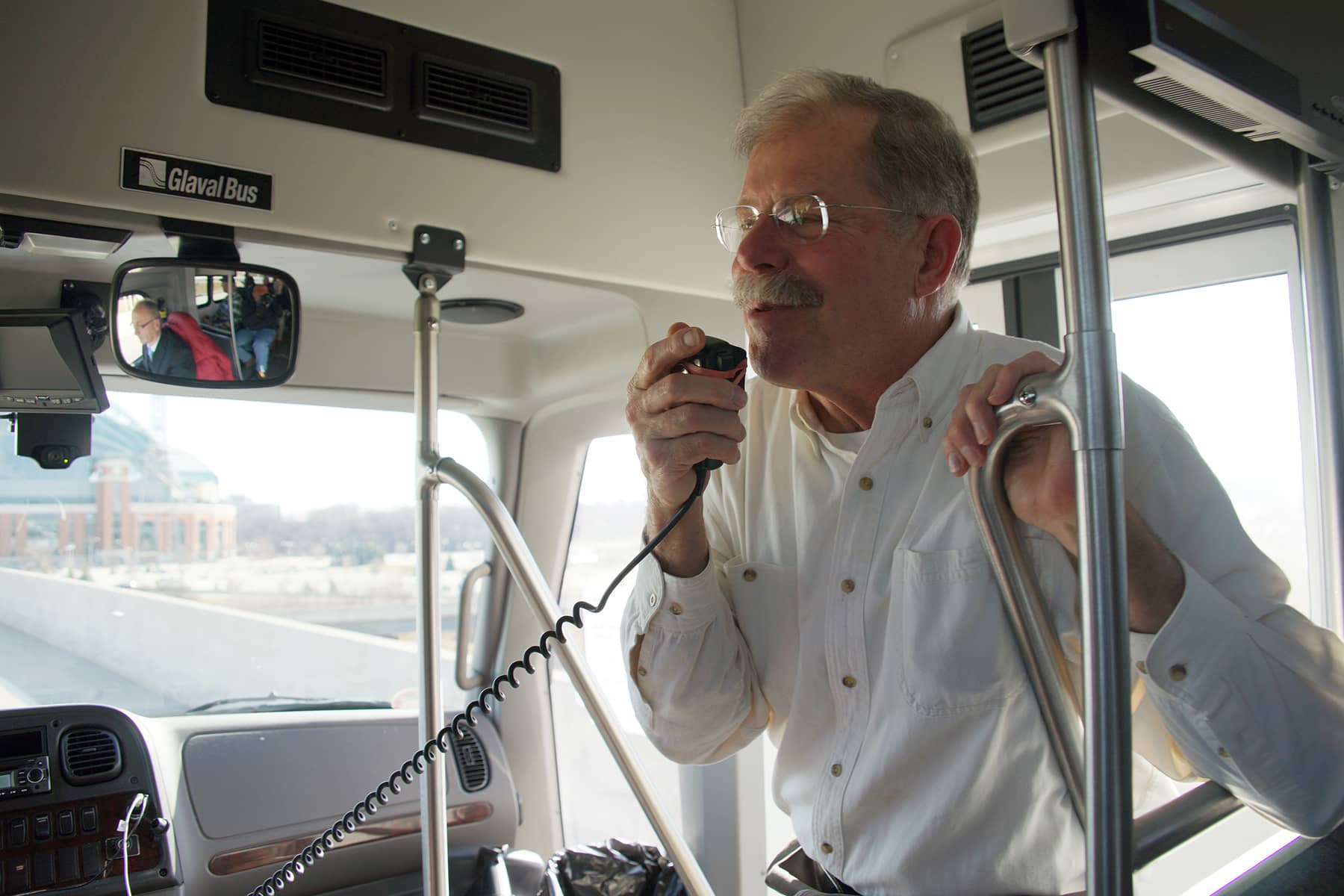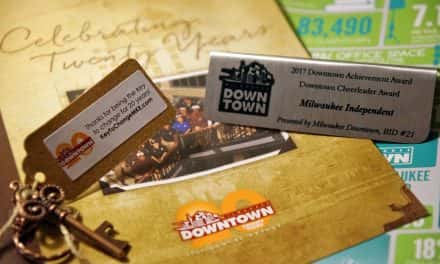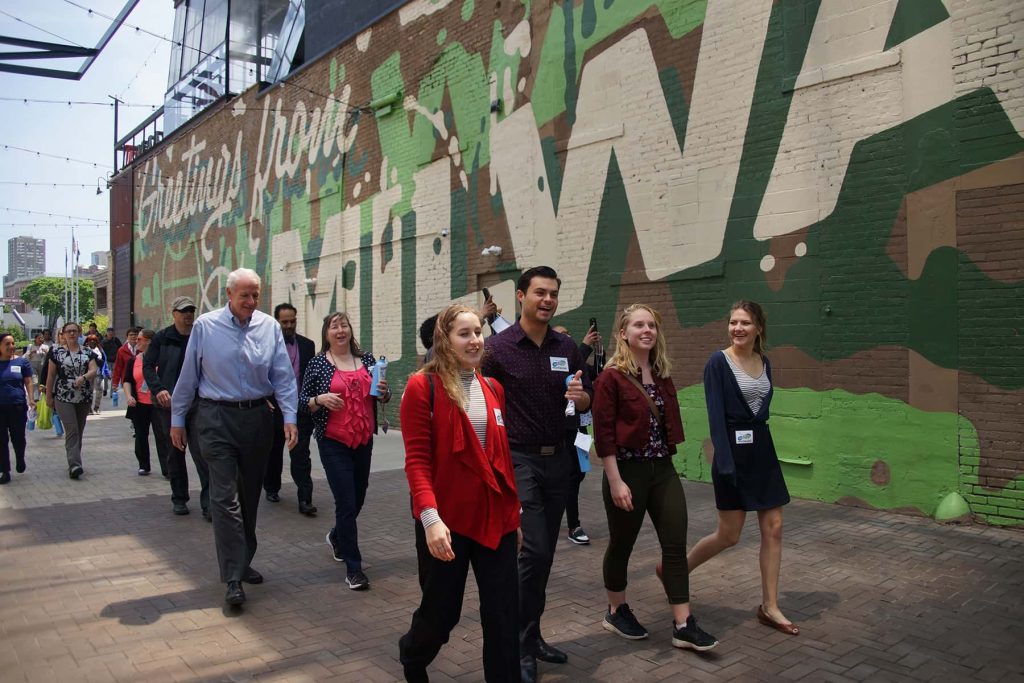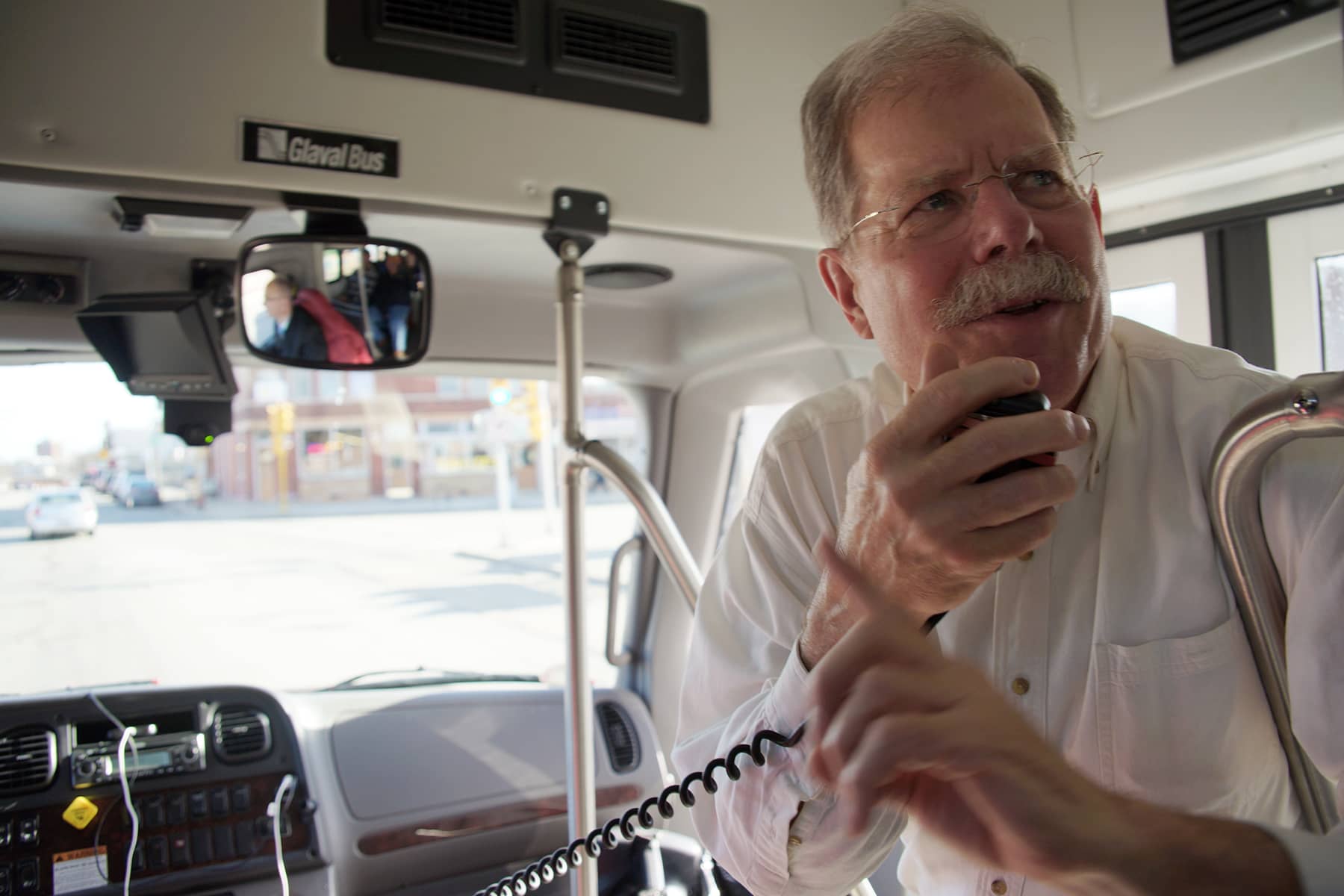
“Someone who discovers this tour on a dusty shelf decades from now will likely find it curiously antique, a yellowing testament to a city lost to memory. I welcome that fate as confirmation that cities, like the people they serve, are constantly in motion, forever evolving in directions that defy easy understanding.” – John Gurda
John Gurda, the celebrated Milwaukee historian and accomplished author, releases his latest work, John Gurda’s Milwaukee: A Self-Guided Tour on December 10. The unique companion was designed to take readers on a historical journey through Milwaukee’s vibrant past and present.
The new book from Gurda draws on his extensive experience conducting bus tours of the city since the 1970s, offering a unique and personal perspective on Milwaukee’s rich history.
“John Gurda’s Milwaukee is the vehicle I’ve chosen to transfer a good deal of hard-won knowledge from the recesses of my aging brain to a permanent place in the public domain. It’s also a snapshot of Milwaukee in the 2020s,” said Gurda in his written introduction.
Gurda’s first bus tour began in 1975, when the Junior League of Milwaukee requested a mobile overview of the city be presented to its new members. He has led hundreds of tours since then, most often on motor coaches, school buses, vans, limousines, bicycles, and on foot.
A Milwaukee native, Gurda has been a prominent figure in bringing the city’s history to life for decades. His new book is an extension of his commitment to sharing Milwaukee’s stories, by providing a detailed guide for both residents and visitors to explore the city’s landmarks, neighborhoods, and hidden gems at their own pace.
Gurda told Milwaukee Independent that he had been thinking about a tour book for years. He considered other ideas as well, like recording the tours, but felt that their access would have been less universally available.
“The demand for guided tours dropped off when the COVID pandemic arrived,” said Gurda. “And at my age now, I have less interest in standing at the front of a rolling bus for three and a half to four hours, talking non-stop. So the time had finally come to produce a self-guided tour book. I thought it would provide a nice legacy of service.”
Plans are already underway to release a digital version of the self-guided tour in the near future.
MILWAUKEE’S HISTORICAL GUIDE SINCE 1975
The book is structured as a series of tours, each focusing on different aspects of Milwaukee’s culture and history. From the bustling streets of downtown to the majestic landscapes of the city’s parks and waterfronts, Gurda’s narratives delve into the stories behind the architecture, the people, and the events that have shaped Milwaukee.
“After my bus tours, people would comment that they felt a bit like they were drinking from a firehose. They were exposed to so much they had been unaware of growing up in Milwaukee,” said Gurda, in his interview with Milwaukee Independent. “They were seeing parts of the city that their daily routes of travel didn’t take them through. So the general reaction was often with surprise – for these different worlds that were all a part of their hometown. It was a powerful experience for people at times.”
The book’s overall tour route inscribes a contorted figure-eight on the heart of Milwaukee, running clockwise through neighborhoods north of the Menomonee Valley and counterclockwise to the south, including Downtown, Avenues West, Pigsville, Concordia, Midtown, Lindsay Heights, Brewer’s Hill, Upper East Side, North Point, Bay View, Historic South Side, Walker’s Point, and the Third Ward.
“The city is a great visual aid,” said Gurda. “It’s one thing to stand in front of a group and verbally explain what took place in Milwaukee’s history. It’s a whole different thing to actually stand in the area that I’m talking about. So that part of giving tours was fun.”
One of the highlights of John Gurda’s Milwaukee: A Self-Guided Tour is its interactive nature. Readers are encouraged to actively engage with the city’s history by visiting the various locations presented in the book, turn for turn.
Detailed maps and directions make it easy for explorers to find their way around, while Gurda’s insightful commentary provides context and depth to each location.
“The hard part of giving tours was physically holding down the microphone button for the bus speaker system. That was before I figured out I could twist a rubber band around it a few times, to keep the button held down,” explained Gurda. “I had to hold that button with my hand for up to four hours. I remember coming home from one tour and the next day I couldn’t close my hand. I had over-stressed my forearm, and ended up wearing a brace from my elbow. I got a lot smarter after that.”
Gurda said that over the years he felt a lot of wear and tear on his body from the tours. After talking for hours, his voice would be sore. Miles of walking and the physicality needed for presenting continued to affect his arm joints and legs as he got older.
The self-guided tour book also features a collection of photographs and illustrations, some of which have never been published before. These images bring Milwaukee’s past to life, offering a visual journey through the decades of the city’s development.
The Milwaukee Historical Society has planned a special event on December 10 for the book’s launch, giving fans a chance to experience the city’s history firsthand with the author.
But John Gurda’s Milwaukee: A Self-Guided Tour is more than just a guidebook, it is a tribute to the city of Milwaukee and its enduring spirit. It invites readers to discover, or rediscover, the city in a way that is both educational and deeply personal, reflecting Gurda’s lifelong dedication to chronicling Milwaukee’s journey through time.
Key to a good tour is also a good design, and that was where Gurda depended on his creative partner of many years, Jim Price.
“Jim Price did a really masterful job of design. I know that he wrestled with the maps for a long time. We had to find a kind of map that was both graphically appealing in print and accurate for the public to follow,” added Gurda. “And eventually Jim connected with Trailforks, which is essentially a mountain biking app, that was perfect for our purposes.”
The common thread in all of Gurda’s work is to offer an understanding of history as “why things are the way they are.”
Gurda’s The Making of Milwaukee, the first full-length history of the city published since 1948, became the standard reference for Milwaukee history. It was also the basis for the Emmy Award-winning documentary series on Milwaukee PBS in 2006.
Noted in the introduction he wrote to readers, Gurda said, “As you explore Milwaukee in the here and now, I hope the experience heightens your appreciation of a city undersung but utterly distinctive, and one that’s moving, always moving, from a fixed past to an indeterminate future at the constant speed of life.”
- Brewtown Tales: New historical book by John Gurda shares more stories of Milwaukee’s people and places
- Exclusive: John McGivern and John Gurda illuminate why Milwaukee should light the Hoan Bridge
- John Gurda shares how the update of his classic book brings Milwaukee into the new millennium
- New and expanded edition of John Gurda’s popular book “Making of Milwaukee” to be released
- John Gurda event to help fund Bay View Community Center
- An evening with John Gurda: Smokestacks on the lakefront
- Audio: Gurda and Winters talk about freshwater culture and tall ships
- “Love your Great Lakes” inspires next generation of freshwater stewards
- John McGivern’s PBS show kicked off its 7th season with a special preview
- From Gurda to Takach: A book signing event with ten Milwaukee authors
- The little known story about how John Gurda accidentally became a historian
- John Gurda navigates Milwaukee history in new book about the city built on water
- John Gurda hosts tour celebrating Milwaukee as a city built on water
- Map: A city built around water
- From ‘on location’ to public ‘screening’ with “Around the Corner”
- MPTV previewed new chapter of the Making of Milwaukee
- John Gurda brings extensive book about Milwaukee neighborhoods to downtown’s Night Market
- John Gurda’s Making of Milwaukee rebooted for 10th anniversary
- Photo Essay: filming on active bridges
- Historian John Gurda featured at upcoming Milwaukee events
- John Gurda awarded Gambrinus Prize by Milwaukee County Historical Society
- Photo Essay: Witness to Milwaukee’s past honored
- Grunau and Gurda among Historical Society’s award recipients
- Exclusive: On location with “Around the Corner” in Whitefish Bay
- John Gurda shares his love of Milwaukee’s Polish history at packed Basilica of St. Josaphat
- John Gurda: Milwaukee’s Polish heritage
Lee Matz


